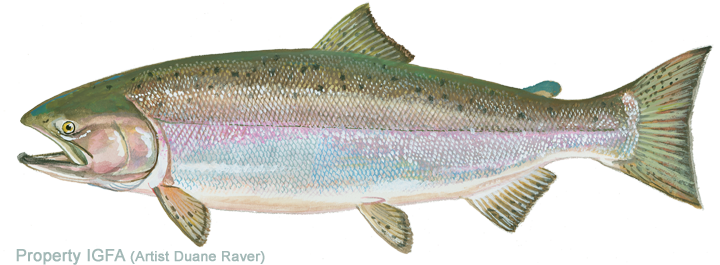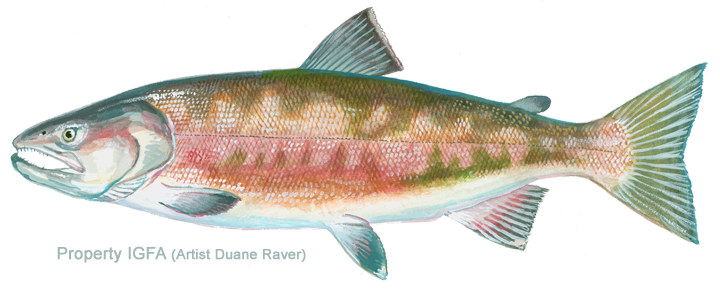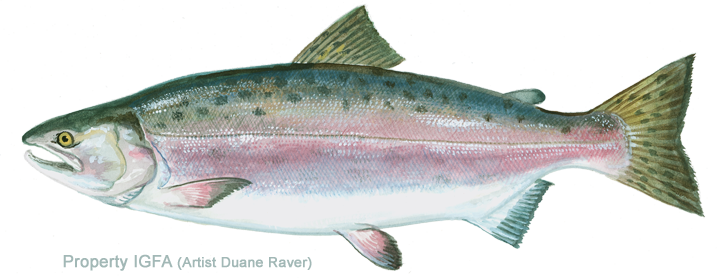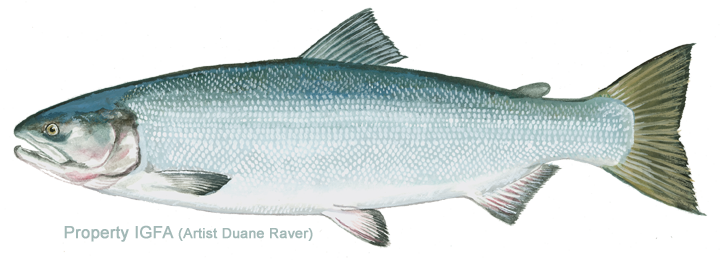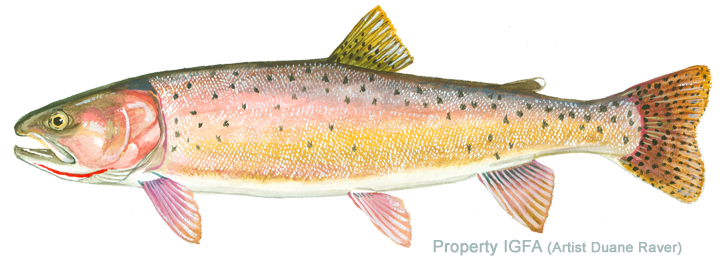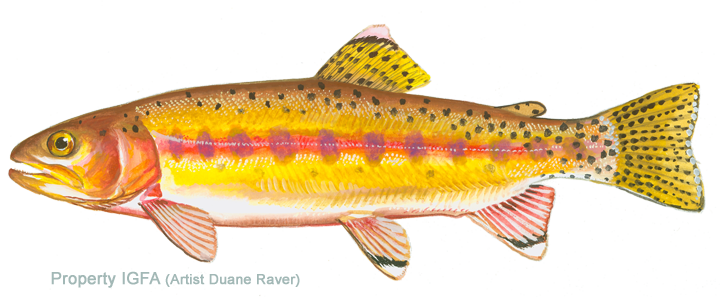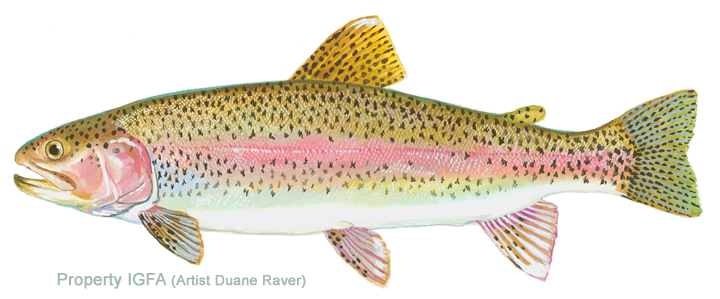Game Fish Identification Reference Guides
Salmon, coho
(Oncorhynchus kisutch)
(Oncorhynchus kisutch)
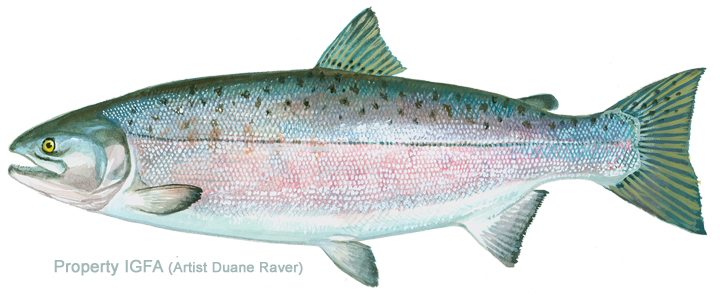
(Walbaum, 1792); SALMONIDAE FAMILY; also called silver salmon, silver sides, hooknose, sea trout, blueback
Endemic to the Pacific Ocean and the rivers flowing into it from northern Japan to the Anadyr River, Russia, and from Point Hope, Alaska south to Monterey Bay, California. Infrequently, it has been reported at sea as far south as Baja California. It has been transplanted into the Great Lakes and into freshwater lakes in Alaska and along the U.S. Pacific coast as well as into Maine, Maryland, and Louisiana in the east, Alberta in Canada, Argentina, and Chile.
This is a silvery fish when at sea and has small black spots on the back, upper sides, base of the dorsal fin, and upper lobe of the tail. It can be distinguished from both the chinook salmon, Oncorhynchus tshawytscha, and the steelhead, or rainbow trout, O. mykiss, by the fact that it only has spots on the upper half of the tail while the latter two have spots over the entire tail. Also, it generally has pale or white gums and a black mouth (some Great Lakes specimens may have gray or black gums) while the chinook always has black gums and a black mouth.
Spawning females change very little. Males tend to turn somewhat darker on the back and a duller on the sides. During the spawning run they may also exhibit a red stripe along the sides, like rainbow trout. The males develop a kype, both the upper and lower jaw becoming extended and “hooked” toward each other so that it becomes impossible to close its mouth. Like all Pacific salmon, it does not feed once it enters freshwater on the spawning run. Although most coho do not seem to migrate extensively, tagged individuals have been recovered up to 1,200 mi (1.931 km) from the tagging site. Some remain in freshwater lakes and streams, never venturing to sea. These specimens do not spawn and are replenished only by successive runs of migratory coho. An estimated 85 percent of native Pacific coho return to spawn in the same stream where they began their life.
It is a very important commercial species and is marketed fresh, fresh frozen, mild cured, smoked, and canned. The usual commercial catch weighs about 6 12 lb (2 5 kg) with 20 lb (9 kg) not uncommon. They can reach weights of at least 33 lb (15 kg)
Endemic to the Pacific Ocean and the rivers flowing into it from northern Japan to the Anadyr River, Russia, and from Point Hope, Alaska south to Monterey Bay, California. Infrequently, it has been reported at sea as far south as Baja California. It has been transplanted into the Great Lakes and into freshwater lakes in Alaska and along the U.S. Pacific coast as well as into Maine, Maryland, and Louisiana in the east, Alberta in Canada, Argentina, and Chile.
This is a silvery fish when at sea and has small black spots on the back, upper sides, base of the dorsal fin, and upper lobe of the tail. It can be distinguished from both the chinook salmon, Oncorhynchus tshawytscha, and the steelhead, or rainbow trout, O. mykiss, by the fact that it only has spots on the upper half of the tail while the latter two have spots over the entire tail. Also, it generally has pale or white gums and a black mouth (some Great Lakes specimens may have gray or black gums) while the chinook always has black gums and a black mouth.
Spawning females change very little. Males tend to turn somewhat darker on the back and a duller on the sides. During the spawning run they may also exhibit a red stripe along the sides, like rainbow trout. The males develop a kype, both the upper and lower jaw becoming extended and “hooked” toward each other so that it becomes impossible to close its mouth. Like all Pacific salmon, it does not feed once it enters freshwater on the spawning run. Although most coho do not seem to migrate extensively, tagged individuals have been recovered up to 1,200 mi (1.931 km) from the tagging site. Some remain in freshwater lakes and streams, never venturing to sea. These specimens do not spawn and are replenished only by successive runs of migratory coho. An estimated 85 percent of native Pacific coho return to spawn in the same stream where they began their life.
It is a very important commercial species and is marketed fresh, fresh frozen, mild cured, smoked, and canned. The usual commercial catch weighs about 6 12 lb (2 5 kg) with 20 lb (9 kg) not uncommon. They can reach weights of at least 33 lb (15 kg)














